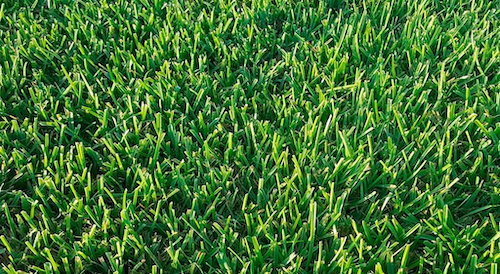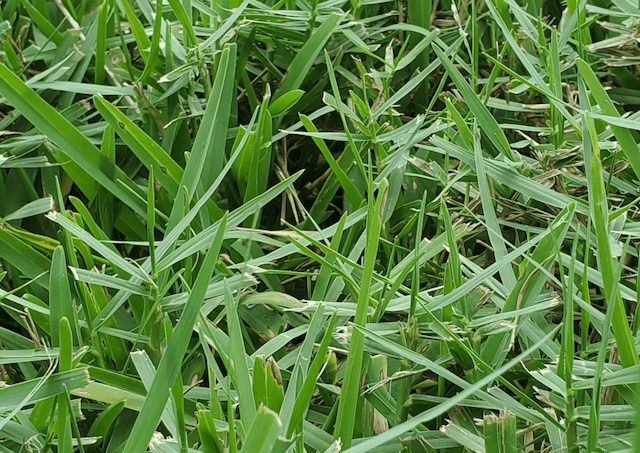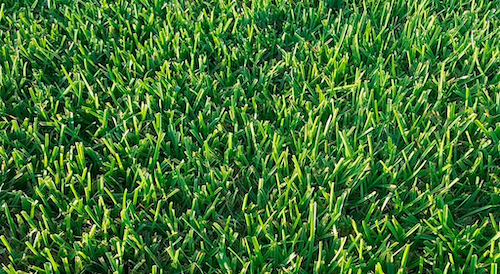Compare Sod Types
Bermuda vs. St. Augustine Sod
Let's dive into a side-by-side comparison of these two grasses. We're looking at everything from cost and looks to how well they stand up to drought, shade, and foot traffic. Stick around to see which one comes out on top!


Price
Which costs more, Bermuda or St. Augustine sod?
Between these two, Bermuda is typically on the pricier side with an average cost per square foot of $0.75. On a per pallet basis, which is usually how sod is sold, this comes out to roughly $375.00 per pallet.
St. Augustine on the other hand, is a more moderately priced at $0.70 per square foot (on average). This comes out to around $350.00 per pallet.
Editor's note: It's important to remember that both of these are averages based on data from around the country so cost can vary depending on your location. Keep in mind this doesn't include other fees like delivery or installation.
See our sod calculator to get a comprehensive sod estimate. →
Sun & Shade
Which grass grows better in the shade?
Bermuda Grass needs abundant sunlight and generally requires at least 6 to 8 hours of full sun a day, struggling in shady conditions.
On the other hand, St. Augustine grass tolerates shade relatively well and can thrive with around 4 to 6 hours of direct sunlight per day, making it a fitting choice for yards with partial shade.
Appearance
Which one looks better? You decide.
When choosing between sods like Bermuda (pictured lefttop) and St. Augustine (pictured rightbottom), personal preference plays a significant role, but understanding the nuances of each type's appearance can guide your decision. Here's what to consider:


Bermuda Grass shines in a brilliant green and has a fine, tight knit, offering a lawn that's both springy to the touch and tough enough for kids and pets.
St. Augustine grass boasts a lush, deep green hue with broad, coarse blades that create a dense, cushiony turf, ideal for a warm, inviting lawn that's as pleasing to the touch as it is to the eye.
Drought Tolerance
Which one needs more water?
Bermuda Grass is highly drought-resistant, thriving in hot, dry climates and bouncing back robustly from water deficits.
On the other hand, St. Augustine grass has moderate drought tolerance; it may need some extra care and water to stay green during extended dry spells.
Takeaway: If you're located in a somewhat dry and arid geographic region and are looking for a grass that can handle drought-like conditions, Bermuda is the better option between Bermuda and St. Augustine.
Grow Zones
Cold or warm weather - which do they prefer?
Bermuda is well-suited for growth in warm or moderate climates. The ideal temperature range for laying Bermuda sod is between 75°F and 90°F.
St. Augustine is well-suited for growth in warmer climates. When it comes to laying sod, the ideal range for St. Augustine is also between 75°F and 90°F. If you choose to lay outside of the ideal range, you can still have success, but it may take a longer time to esablish and require a bit more maintenance.
As you may have noticed, both Bermuda and St. Augustine thrive under pretty similar climatic conditions!
Lawn Traffic Tolerance
Which sod handles heavy foot traffic better?
Bermuda Grass excels under high foot traffic, its dense growth and quick recovery rate making it a go-to choice for sports fields and active lawns.
On the other hand, St. Augustine grass is moderately tolerant to foot traffic, holding up to some back yard play and activity with a recovery that keeps your lawn looking full and lively.
Takeaway: If you're looking for a grass that can handle heavy foot traffic, Bermuda is the better option between Bermuda and St. Augustine.
Establishment Rate
Which grass grows faster?
Bermuda grass is a fast-establishing, aggressive grower, known for its fine texture and resilience, thriving in hot, sunny environments.
St. Augustine grass, with its robust spreading habit and preference for warm climates, typically establishes quite readily, making it a popular choice for lush, green lawns in milder regions.
Net, net - if you're looking for a grass that establishes quickly, Bermuda is the way to go.
Pest & Disease Resistance
Which handles pests better?
Bermuda Grass shows good pest resistance, especially to grubs, but can be vulnerable to diseases such as dollar spot and spring dead spot without proper care.
St. Augustine grass can struggle with pests like chinch bugs and diseases such as gray leaf spot, especially in humid, coastal regions, requiring proactive management.
TLDR - if you're looking for a grass that wards off pests and disease, Bermuda edges out the competition.
Which Is Best?
Which sod is better, Bermuda or St. Augustine?
Alright it's time to count the scores up.
Most blogs or articles are going to give you a wishy washy "it's up to you" speil. That is definitely true. You'll need to choose based on your geographic conditions and what you like most looks-wise.
That being said, if we just compare the scores based on the following measures. Higher is better in this case.
- Average Cost: 4 for Bermuda, 4 for St. Augustine
- Shade Tolerance: 3 for Bermuda, 8 for St. Augustine
- Drought Tolerance: 9 for Bermuda, 6 for St. Augustine
- Traffic Tolerance: 9 for Bermuda, 5 for St. Augustine
- Establishment Rate: 8 for Bermuda, 7 for St. Augustine
- Pest & Disease Resistance: 7 for Bermuda, 5 for St. Augustine
Drumroll please...
All in all, Bermuda comes out on top with a score of 40/60 versus 35/60 for St. Augustine.
Thanks for reading! If you have any feedback or corrections for us, please email our editor at editor@sodcalculator.com.
Frequently asked questions (FAQs)
Can't find the answer you're looking for? Reach out to us directly at team@sodcalculator.com
Which is better for dogs, Bermuda or St. Augustine sod?
Neither Bermuda nor St. Augustine are particularly durable; however, they aren't at the bottom of the pack either. For both St. Augustine and Bermuda, it will come down to how rough your pets are on the turf.
Will Bermuda overgrow St. Augustine?
Both Bermuda and St. Augustine are aggressive growers, and neither is likely to be overtaken by the other.
Can you mix Bermuda and St. Augustine sod?
It's not recommended to mix Bermuda and St. Augustine sod. Mixing sod types can lead to uneven appearance and issues with lawn health. It's best to choose Bermuda or St. Augustine sod and stick with it.
Which costs more, Bermuda or St. Augustine sod?
Neither Bermuda nor St. Augustine are particularly expensive or cheap at between $350.00 - $375.00 per pallet. St. Augustine and Bermuda both offer a balance between cost and characteristics.
Is Bermuda or St. Augustine sod better for shade?
St. Augustine is a great option for shady areas! It is tolerant of shade and can thrive in areas with less sunlight. Bermuda is not very tolerant of shade and would likely struggle.
What are the main differences between Bermuda and St. Augustine?
The main differences between Bermuda and St. Augustine are in their cost effectiveness, shade tolerance, and popularity. St. Augustine performs better in all these aspects.
More Bermuda Comparisons
More St. Augustine Comparisons
- St. Augustine vs. Buffalo Comparison →
- St. Augustine vs. Zoysia Comparison →
- St. Augustine vs. Tall Fescue Comparison →
- St. Augustine vs. Kentucky Bluegrass Comparison →
- St. Augustine vs. Perennial Ryegrass Comparison →
- St. Augustine vs. Centipede Comparison →
- St. Augustine vs. Fine Fescue Comparison →
- St. Augustine vs. Bahia Comparison →